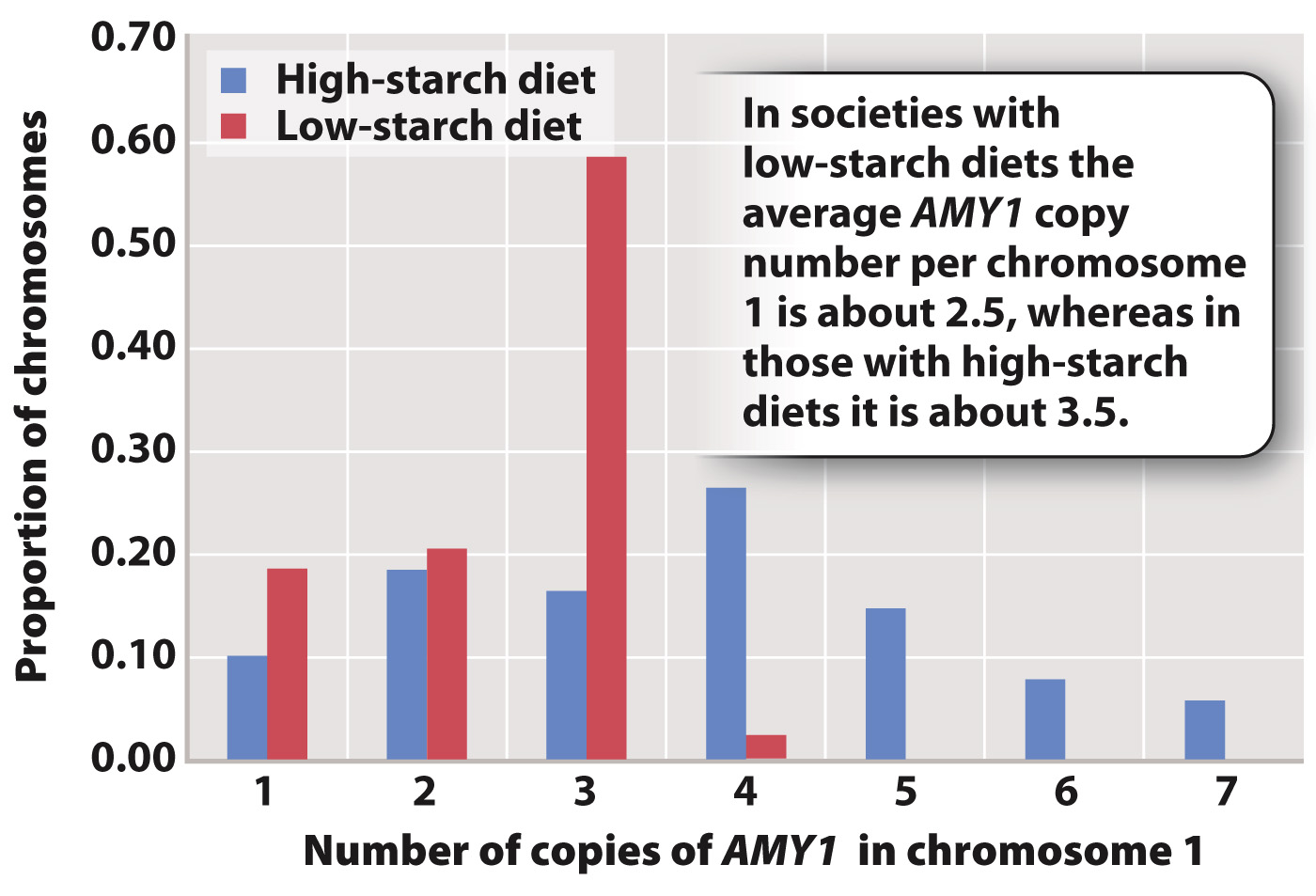In addition to SNPs, another very common form of genetic variation present in the modern human population is copy-number variation (CNV), or differences among individuals in the number of copies of a region of the genome. In contrast to the short repeats characteristic of VNTRs, the regions involved in CNVs are large and may include one or more genes. An example is shown in Fig. 15.8. In this case, a region of the genome that is normally present in only one copy per chromosome (Fig. 15.8a) may in some chromosomes be duplicated (Fig. 15.8b) or deleted (Fig. 15.8c). The multiple copies of the CNV region are usually adjacent to one another along the chromosome.
One of the surprises that emerged from sequencing the human genome was that CNV is quite common in the human population. Any two individuals’ genomes differ in copy number at about five different regions, each with an average length of 200 kb to 300 kb. Across the genome as a whole, about 10% to 15% of the genome is subject to copy-number variation.
Some CNVs occur in noncoding regions, but others consist of genes that are present in multiple tandem copies along the chromosome. An example is the human gene AMY1 for the salivary gland enzyme amylase, which aids in the digestion of starch. This gene is located in chromosome 1, and the AMY1 copy number differs from one chromosome 1 to the next. Fig. 15.9 shows the distribution of AMY1 copy number along chromosome 1 in two groups of people: societies with a long history of a high-starch diet, and societies with a long history of a low-starch diet. There is a clear tendency for chromosomes from the latter group to have fewer copies of AMY1 than those from the former group. On average, a chromosome 1 from the low-starch group has a copy number of about 2.5, whereas one from the high-starch group has an average of about 3.5. Because each individual has two copies of chromosome 1, this difference means that the average individual in the low-starch group has about 5 copies of AMY1, whereas the average individual in the high-starch group has about 7 copies. A plausible hypothesis is that extra copies were selected in groups with a high-starch diet because of the advantage extra copies conferred in digesting starch.

FIG. 15.9 Copy number variation in a gene that helps break down starch. Copy numbers of AMY1 vary between societies with high-starch and low-starch diets. Data from G. H. Perry, N. J. Dominy, K. G. Claw, A. S. Lee, H. Fiegler, R. Redon, J. Werner, F. A. Villanea, J. L. Mountain, R. Misra, N. P. Carter, C. Lee, and A. C. Stone, 2007, “Diet and the Evolution of Human Amylase Copy Number Variation,” Nature Genetics 39:1256–1260.
Copy numbers of AMY1 vary between societies with high-starch and low-starch diets. Data from G. H. Perry, N. J. Dominy, K. G. Claw, A. S. Lee, H. Fiegler, R. Redon, J. Werner, F. A. Villanea, J. L. Mountain, R. Misra, N. P. Carter, C. Lee, and A. C. Stone, 2007, “Diet and the Evolution of Human Amylase Copy Number Variation,” Nature Genetics 39:1256–1260.

